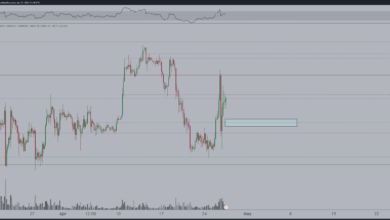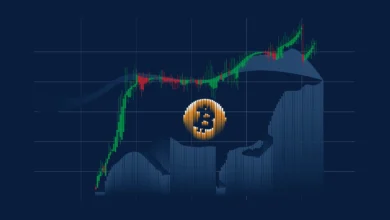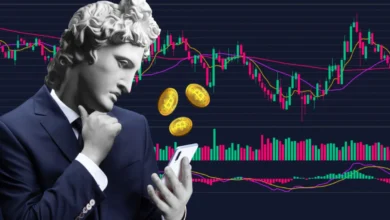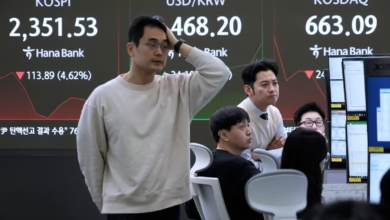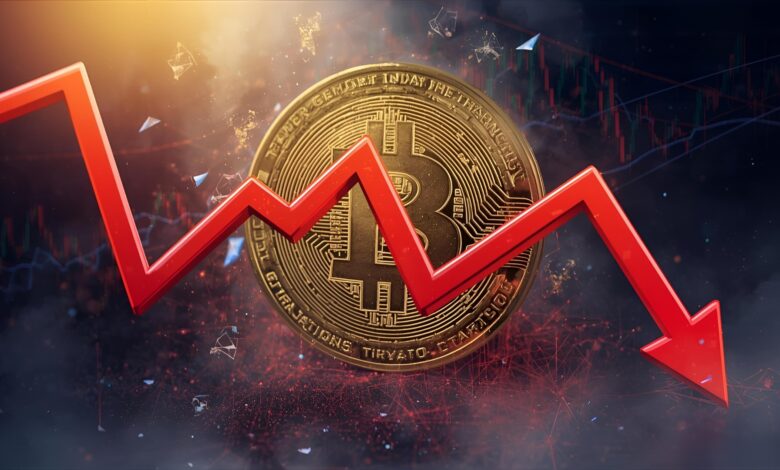
Bitcoin price today slips to $108k amid trade tensions, credit risks
Bitcoin price today falls to $108k as trade tensions and credit risks rattle markets Explore drivers, charts, and outlook with expert-level insights.
The phrase Bitcoin price today has a way of concentrating global attention. When the headline reads that Bitcoin has slipped to $108,000, it signals more than a routine market wobble. It reflects a complex mosaic of macroeconomic uncertainty, evolving trade policy, shifting credit conditions, and a rapid repricing of risk across crypto and traditional assets. For investors, traders, and builders, the question is not simply why the price moved, but what the move reveals about market structure, liquidity, leverage, and long-term conviction in digital assets.
This in-depth analysis unpacks how trade tensions and credit risks converged to push Bitcoin price today lower, why the reaction may be different from previous selloffs, and what to watch next. We’ll explore the interplay between exchange order books and derivatives, the role of funding rates and open interest, the spillover from equities and high-yield credit, and the on-chain signals that often foreshadow turning points. Throughout, we’ll incorporate LSI keywords and related concepts—such as crypto market volatility, altcoin performance, risk-off sentiment, macro headwinds, and liquidity stress—to help you understand the wider context without over-optimization or keyword stuffing.
The day’s move in context
A swift reset from elevated levels
The slide to $108k crystallized within hours as global markets digested fresh trade headlines and a flurry of credit-market warnings. While Bitcoin has weathered steeper drawdowns historically, the character of the pullback matters.
This decline unfolded while spot liquidity was thinner than usual, magnifying the price impact of market orders. The result was a cascade of stop-loss triggers and forced de-risking in leveraged positions, a familiar dynamic in crypto cycles when risk appetite swings abruptly.
Why Bitcoin price today behaves differently in a macro storm

Bitcoin’s profile has evolved. Institutional adoption, derivatives depth, and integration with traditional portfolios mean crypto increasingly trades alongside global risk assets. When trade frictions raise the probability of slower growth or supply-chain disruptions, cross-asset correlations tend to rise. The Bitcoin price today mirrors that reality: macro shock → equity stress → tighter financial conditions → repricing of speculative exposures, including digital assets.
Trade tensions: the spark and the fuse
Policy uncertainty boosts volatility
Trade tensions inject uncertainty into corporate earnings, investment plans, and consumer confidence. In markets, uncertainty itself is a risk factor that widens bid-ask spreads and reduces market depth. Dealers step back; passive liquidity dries up; and momentum algorithms reinforce the move. In crypto, the impact can be amplified because market-making capital is more mobile and sensitive to funding costs. When tariffs or export controls become headline risks, the Bitcoin price today often reflects that uncertainty within minutes.
Flight to safety reshapes crypto flows
A classic response to trade shocks is a shift toward perceived havens—high-grade government bonds, cash, and sometimes gold. Crypto’s role in that matrix is nuanced. For long-horizon holders, Bitcoin can still be a digital store of value and a hedge against fiat debasement. But for leveraged traders and funds managing risk budgets, the first instinct during a volatility spike is to reduce gross exposure. That’s why Bitcoin price today may fall in tandem with equities during acute trade scares, even if the long-term thesis remains intact.
Credit risks the slow burn beneath the surface
Why credit leads risk assets
When credit spreads widen and funding markets tighten, the ripple effects touch every corner of finance. Higher borrowing costs pressure corporate balance sheets and weigh on valuations for growth assets. In crypto, credit conditions affect prime brokers, lenders, and market makers that provide essential liquidity. If their risk models flash red, balance sheets contract and basis trades unwind. The outcome is lower leverage capacity and more sensitivity to order flow, setting the stage for sharper reactions in the Bitcoin price today.
The leverage channel in crypto
Crypto markets run on leverage—perpetual swaps, futures, options, and collateralized lending. When credit risk rises, margin requirements increase and funding rates can flip quickly from positive to negative, incentivizing longs to close. A cluster of liquidations—particularly if open interest is concentrated in one direction—can accelerate declines. This deleveraging impulse, triggered by credit stress, is a key mechanism behind sudden drawdowns like the drop to $108k.
On-chain signals separating noise from signal
Exchange flows and realized profit/loss
One way to parse Bitcoin price today is to observe net flows to and from centralized exchanges. Elevated inbound transfers often correspond to selling pressure as holders move coins to venues for liquidation. Conversely, rising outflows can signal accumulation. Coupled with realized profit/loss metrics, these flows reveal whether the market is panicking or simply rotating. If realized losses spike while long-dormant coins stay put, it suggests short-term holders are capitulating while long-term holders remain steadfast.
Dormancy, age bands, and conviction
Metrics like coin days destroyed, spent output age bands, and HODL waves help assess whether the selloff is tapping into deep, long-held supply or just churning recent buyers. A resilience in older cohorts often marks the difference between a transient correction and a structural top. In the current downturn to $108k, early indications of long-term holder patience would frame the move as a liquidity event rather than a change in the foundational narrative.
Derivatives and market structure
The role of funding rates, basis, and skew
Perpetual swap funding rates track the balance of long versus short pressure. During the slide, funding turning negative across major venues typically reflects a rush to hedge or short. Meanwhile, the futures basis—the difference between futures prices and spot—compresses as arbitrage capital de-leverages. Options markets add another layer: rising implied volatility and put-call skew show demand for downside protection. Together, these signals map the microstructure behind the Bitcoin price today.
Liquidations and the cascade effect
Crypto’s transparency around liquidations means we can often see when and where the dominoes fell. Clusters of long liquidations below widely watched levels can form air pockets in the order book. As prices slice through, resting liquidity thins further, forcing market orders to chase bids lower. The descent to $108k fits this pattern: a technical break, a liquidation wave, and a re-equilibration at a new range where buyers re-emerge.
Spot liquidity and the order book
Thin books magnify small impulses
During periods of macro tension, many participants reduce resting orders to avoid being picked off by headline-driven moves. With fewer bids in the book, the price impact of relatively small sells increases. Market makers widen spreads and cut size to protect against adverse selection. The result: the Bitcoin price today becomes jumpier, with exaggerated ticks that can overshoot fair value before stabilizing.
Whale behavior and iceberg orders
Large holders often use iceberg orders and time-weighted execution to avoid signaling their intent. Yet when price accelerates, even sophisticated execution can struggle to mask size. Whales either pull orders or chase liquidity across venues, contributing to the jagged profile of intraday charts. Observing the footprint of such flows helps explain why price can fall quickly to $108k and then bounce just as sharply as opportunistic buyers step in.
Intermarket linkages: equities, bonds, and commodities
Rising correlations during stress
Historically, Bitcoin’s correlation to tech equities tends to increase during macro shocks. Higher real yields and wider credit spreads create a mechanical headwind for duration-sensitive assets and speculative growth. When equity vol rises, portfolio-level risk controls trigger de-risking, which bleeds into crypto allocations. That’s why the Bitcoin price today often mirrors the risk-off tone in the S&P 500 or Nasdaq after adverse trade or credit news.
The role of the dollar and commodities
A stronger U.S. dollar typically weighs on risk assets and non-yielding stores of value. Meanwhile, oil prices can transmit inflationary pressure that tightens financial conditions. In this environment, Bitcoin competes for capital against safer cash yields. When the balance tilts toward holding dollars, crypto demand can ebb temporarily, pressuring Bitcoin price today even if the long-term inflation hedge thesis remains intact.
Altcoins and the beta effect
Why altcoins often underperform
When liquidity contracts, capital gravitates to the highest-quality collateral. Bitcoin, as the most liquid and institutionally held crypto, tends to outperform altcoins on a relative basis during risk-off episodes. However, because altcoins carry higher beta, their declines can be steeper in percentage terms, causing cross-margin liquidations that spill back into BTC. This feedback loop is another reason a slide to $108k can happen quickly.
Rotation patterns after the dust settles
In the aftermath of a shock, markets often see a quality rotation back into Bitcoin first, followed by selective altcoin recoveries once volatility compresses. Watching ETH/BTC and other cross pairs can provide early signals of returning risk appetite. During periods when Bitcoin dominance rises, the Bitcoin price today may stabilize even if the broader crypto complex remains choppy.
Investor playbooks: what traders and long-term holders watch
Short-term traders levels, vol, and catalysts
For active traders, the focus after a break to $108k is on well-defined support and resistance zones, intraday VWAP, funding normalization, and whether implied volatility starts to recede. A constructive sign is when price begins to build higher lows on shrinking liquidations and healthier spot bid participation. Traders also monitor upcoming macro catalysts—policy speeches, tariff announcements, or credit updates—that could reverse sentiment.
Long-term investors thesis integrity and accumulation
Long-term investors examine whether the investment thesis is intact: network security, hash rate trends, developer activity, institutional custody adoption, and regulatory clarity. Drawdowns are opportunities to rebalance or accumulate if fundamentals are steady or improving. In that lens, the Bitcoin price today is a snapshot in a multi-year story, not a verdict on the destination.
Risk management in a high-volatility regime
Sizing, diversification, and scenario analysis
Thoughtful position sizing is crucial when volatility spikes. Scenario analysis—mapping outcomes if price revisits prior support or accelerates lower—helps ensure that one move does not imperil the broader portfolio. Diversification across uncorrelated assets and maintaining an appropriate cash buffer can reduce the need for forced selling during drawdowns like the slide to $108k.
Tools for disciplined execution
Using limit orders to avoid slippage, staggering entries, and respecting predefined stop-loss levels are evergreen best practices. Options can provide asymmetric hedges, allowing investors to stay involved while capping downside. Above all, consistency matters more than predicting every tick in the Bitcoin price today cycle.
Sentiment and narrative how headlines shape flows
Media tone and narrative pivots
Markets are narrative machines. During episodes of trade frictions and credit worries, headlines emphasize risk and contagion, which can feed a loop of cautious positioning. As new information arrives—maybe a de-escalation in policy rhetoric or a calmer credit tape—sentiment can pivot quickly. Monitoring the tone of coverage and the frequency of negative versus positive mentions can provide early clues about when the Bitcoin price today might stabilize or rebound.
Social signals and the retail impulse
Social platforms amplify fear and euphoria alike. Spikes in search interest, influencer commentary, and retail trading app activity often coincide with local extremes. While these signals are noisy, sharp surges in fear metrics can sometimes mark capitulation. Balanced against on-chain accumulation by long-term addresses, that combination can foreshadow a short-covering rally off levels like $108k.
Technical landscape what the chart may be telling us
Structure, momentum, and moving averages
From a technical perspective, traders assess whether the drop has violated key moving averages, trendlines, or prior consolidation ranges. If price reclaims those levels with strong volume, it indicates demand beneath the surface. Momentum oscillators help gauge whether the market is oversold in the short term. In environments driven by macro shocks, technicals matter most when they align with improving fundamental catalysts.
Volume profile and fair value zones
A volume-by-price profile reveals where the most trading occurred historically. If $108k sits near a high-volume node, it may act as a sticky area where buyers and sellers negotiate. If it’s in a low-volume pocket, price can traverse that region quickly until it reaches a heavier zone of interest. Understanding these fair value areas helps contextualize intraday swings in the Bitcoin price today.
Also Read: Coindesk Bitcoin Price Live BTC Insights & Trends
Outlook what could change the narrative

Bullish catalysts to watch
De-escalation of trade disputes, stabilization in credit spreads, and signs of central banks adopting a more accommodative stance could restore risk appetite. On the crypto-native side, positive regulatory clarity, an uptick in institutional flows, and renewed developer momentum in scaling solutions or layer-2 adoption would reinforce confidence. If on-chain data shows sustained accumulation by long-term holders, the foundation for a durable recovery strengthens.
Bearish risks to monitor
Conversely, an escalation in trade barriers, deterioration in corporate credit, or unexpected policy tightening could extend the risk-off phase. Crypto-specific risks include large-scale exchange incidents, stablecoin stress, or regulatory setbacks. In such cases, the Bitcoin price today could remain volatile as markets demand a higher risk premium.
Practical takeaways
Stay data-driven and flexible
In fast-moving markets, flexibility beats stubborn conviction. Let data—funding rates, open interest, on-chain flows, and cross-asset signals—guide decisions. Maintain a plan for multiple scenarios. Keep an eye on liquidity conditions and be prepared for gap moves around macro headlines. Above all, remember that the Bitcoin price today is one frame in a much longer film.
Align time horizon with strategy
Match your tactics to your time horizon. Day traders thrive on volatility and clear risk parameters. Swing traders look for mean reversion or trend continuation. Long-term allocators focus on thesis alignment and incremental accumulation. Confusing these frameworks is a common source of avoidable losses, especially when headlines about trade tensions and credit risks dominate the tape.
Conclusion
The slide in the Bitcoin price today to $108k underscores how intertwined crypto has become with the broader macro landscape. Trade tensions and credit stresses don’t just affect factories and loan books; they shape liquidity, leverage, and sentiment in digital assets. Yet the same transparency and round-the-clock trading that can amplify volatility also provide investors with rich, real-time data to navigate uncertainty.
Whether you are a short-term trader parsing funding flips or a long-term believer tracking on-chain accumulation, the key is to stay grounded in process. Assess the quality of liquidity, respect the message from credit markets, and let the market show you when risk appetite returns. Corrections can be unnerving, but they also reset the playing field, clearing excess leverage and creating opportunities for disciplined participants. In that sense, the Bitcoin price today is not an end in itself, but a signal—one that, read carefully, can illuminate the path ahead.
FAQs
Why did the Bitcoin price today drop to $108k so quickly?
The decline reflects a confluence of trade tensions, credit risk fears, and thin liquidity that magnified selling pressure. As funding turned negative and leverage unwound, stop-losses and liquidations accelerated the move. The interconnectedness with equities and credit further reinforced the risk-off tone, producing a swift repricing.
Is this move different from past Bitcoin corrections?
Yes and no. Sharp drops are part of Bitcoin’s history, but today’s market features deeper derivatives liquidity, broader institutional participation, and tighter links to macro signals. That makes the Bitcoin price today more sensitive to cross-asset shocks but also provides more tools—like options and basis trades—to manage risk.
What on-chain metrics are most useful after a drawdown?
Focus on exchange net flows, realized profit/loss, long-term holder supply, and spent output age bands. Rising realized losses paired with steady long-term holder behavior suggests capitulation among recent buyers rather than structural distribution, a constructive sign for eventual stabilization.
How should traders adjust strategies during heightened volatility?
Emphasize position sizing, predefined risk limits, and disciplined execution via limit orders. Monitor funding rates, open interest, and options skew for clues about positioning. Consider hedging with options if you want to stay engaged while capping downside risk.
Does a drop like this undermine Bitcoin’s long-term thesis?
Not necessarily. Short-term price swings reflect liquidity and leverage dynamics, while the long-term thesis hinges on scarcity, network security, adoption, and macro monetary trends. If those pillars remain intact, episodes like the Bitcoin price today drawdown can serve as opportunities rather than contradictions.

